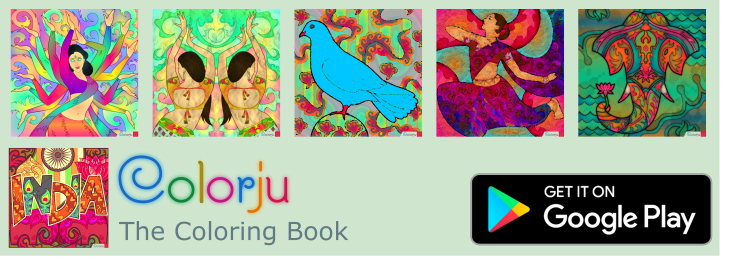The simple act of coloring a picture can be quite beneficial in relieving stress and anxiety. One popular way to do this is to color mandalas and use it as a form of meditation.
This form of art therapy has become popular among adults as well as children because it is a relaxing exercise that can take your mind off of other things. Studies have shown that the geometric circles known as mandalas can be particularly beneficial over other types of drawings.
In Sanskrit, the word mandala means "circle." Circles are a powerful symbol found in every culture. We see them in halos, prayer wheels, and other religious symbols as well as architecture and nature.
Mandalas are sacred circles that have long been used to facilitate meditation in the Indian and Tibetan religions of Hinduism and Buddhism. Many other religions, including Christianity and Taoism, have incorporated mandalas into their spiritual practices as well.
Mandalas may be actual drawings or paintings. They may also be temporary creations, such as sand mandalas, which are often ceremoniously dismantled after completion. The main circle shape of a mandala is filled with a variety of geometric shapes and symbols. These are often repeated in symmetrical patterns using bold color schemes.
The process of creating mandalas is as important as viewing the finished work. The intent of both stages is to center the mind and body, which is why they are an ideal tool for meditation.
Mandalas can also be used as a healing tool for meditation. Meditation itself has been shown to reduce stress, combat depression, reduce pain, and lower blood pressure.
It may also boost the immune system and stimulate the release of melatonin, a hormone believed to slow cell aging and promote sleep. While it is unclear what impact visual mandalas may have, people may find that they are a useful tool for their meditative practice.
Mandalas are not just something to look at or meditate on. There are now mandala coloring books that can be useful to anyone. Coloring a mandala using pencil crayons, crayons, paint, or pastels combines the benefits of meditation and art therapy into a simple practice that can be done at any time and place.
People who color mandalas often experience a deep sense of calm and well-being.
It's a simple tool that doesn't require any expertise, but it can be remarkably soothing and nourishing. Mandalas not only focus your attention but also allow you to express your creative side, which many of us neglect in our daily lives.
They can be particularly useful for:
Children: Coloring mandalas can help children deal with emotions and cope with illness. Instead of verbalizing their feelings, many children express themselves through color and art. Psychologist Barbara Sourkes, Ph.D., has used these "color-feeling wheels" for children with cancer and their siblings. She notes that it can be used with children as young as 3-years-old and that it's an exercise in which they don't fear giving away their feelings as a typical children's drawing might.3
People with a terminal illness: The University of California at Irvine Cancer Center and the University of Pennsylvania Cancer Center are just two cancer centers that have offered mandala workshops to cancer survivors.
People who want to quit smoking: For the same reason that many smokers take up knitting when they quit, coloring mandalas can keep your hands occupied and help relieve stress. You can bring your mandala book with you so you can pick it up for several minutes at a time whenever you feel the urge to smoke.
However, mandalas are not for everyone. Coloring a mandala involves repetitive movements and gripping. This can aggravate the pain of rheumatoid arthritis and osteoarthritis in the fingers. It can cause pain in people with carpal tunnel syndrome, lateral epicondylitis (tennis elbow), and other forms of repetitive strain injuries as well.
There is not much to coloring a mandala for meditation purposes. It requires just a few simple steps and some time when you can be alone.
You will need crayons, pencil crayons, chalks, pastels, paint, or markers in a variety of colors.
Print a mandala or use a mandala coloring book.
Find a quiet and comfortable place where you can work comfortably with no distractions.
Start coloring.
When coloring, try not to think too much about your choice of color and don't worry about matching colors. Let your instincts guide you. After you begin with the first color, the rest will follow naturally. Susan F. Fincher, the author of numerous mandala coloring books, says, "One color on the mandala invites another, like a guest who asks to bring his friend to your party."
There are numerous resources where you can find mandalas to color and integrate into your meditation practice. Websites such as ColorMandala.com allow you to print mandalas from your computer. You can also find mandala coloring books, such as Fincher's books from Shambhala Publications.
Yet another option is to draw your own mandala. By using basic drawing tools such as a compass and protractor, you can create your own geometric patterns to color as well. They're quite simple and there are no right or wrong ways to draw them, simply begin creating shapes within a large circle.


No comments:
Post a Comment